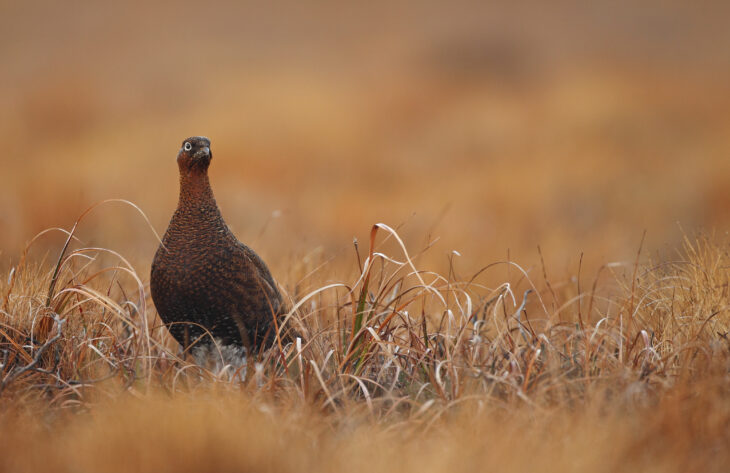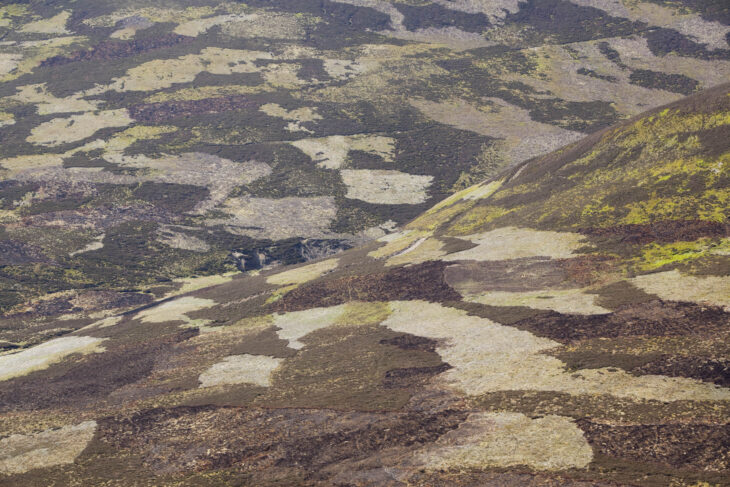Grouse moor announcement marks positive steps for nature’s recovery
When we published our Nature Recovery Plan with WWF Scotland and RSPB Scotland in August we set out 11 key actions that were practical and could be taken now to help address the biodiversity crisis. Whilst not an exhaustive list of what we need to do in Scotland to reverse the long-term decline in biodiversity, these 11 asks are a key focus for our advocacy in the run up to next year’s Scottish elections.

We were therefore pleased to hear the statement at the end of November by Rural Affairs and Natural Environment Minister Mairi Gougeon on the independent report of the Grouse Moor Management Group when she announced that the government was planning to implement two of the recommendations from our Plan.
The part of the speech that has received most attention was the stated intention to introduce grouse moor licensing arrangements in response to continued raptor persecution. The move was cited as bringing our system closer into line with those in other countries, where greater regulation of shooting and hunting is normal.
It looks like the 2017 report by Scottish Natural Heritage (now NatureScot) – which showed that 40 out of 131 satellite tagged young golden eagles had disappeared in suspicious circumstances between 2004-16, mostly in locations on or adjacent to grouse moors – was a watershed.
Licencing provides nothing to fear for the many grouse moors that operate within the law and follow best practice.
We set out in our Nature Recovery Plan that the measures used to date to deter the illegal persecution of birds of prey have been mostly ineffective. As such, we warmly welcome this announcement as licencing has the potential to help ensure that raptor persecution becomes a thing of the past. Importantly, we think that licencing provides nothing to fear for the many grouse moors that operate within the law and follow best practice.
The Scottish Government’s basic proposition,“that a licence will be required to operate a driven grouse moor business, and that if there is strong evidence of unlawful activity or serious breaches of codes of practice by that business, then their licence could be withdrawn” is sound. However, we will need to see the detail on how this will work in practice before we can judge how successful it is likely to be.

The Trust has long highlighted the damage muirburn can do to our biodiverse peatland habitats that lock away around 140-160 years’ worth of Scotland’s annual carbon emissions. In 2017, we published our Land Stewardship Policy which called for the prevention of burning on all blanket bog and wetlands and also set out the need for mandatory requirements as the voluntary Muirburn Code was not working.
There is a strong evidence base that sets out why we should prevent this activity as it can result in damage to peatland species, microtopography and wider habitat, soils and ecosystem functions. Also, healthy peatlands do not require burning for their maintenance. So it was therefore doubly welcome that the Minister also set out last week that in future muirburn will only be permitted under licence from NatureScot, and importantly that there will be a statutory ban on burning on peatland.
There was another important element to the statement which was consistent with the asks in our Nature Recovery Plan. The Minister announced the intention for Scottish Government to work with stakeholders to produce guidance on best management practices for the use of medicated grit, following recent research by SEPA that looked at whether residues from the grit ends up in our water bodies. This is a welcome first step showing the necessary caution needed to prevent the residues causing unknown damage by ending up in our water sources or in our food.
Earlier this year the Animal and Wildlife Penalties, Protections and Powers (Scotland) 2020 Act granted full protected species status to mountain hares and removed the open season for their culling. We felt this was necessary given ongoing concerns about the health of the population in Scotland and the need to ensure greater adherence to the precautionary principle under such circumstances.
We hope that the Scottish Government, conservationists and land managers can work together to ensure the approach taken to licensing grouse moors is practical, and delivers towards tackling climate change and protecting Scotland’s wildlife.
The Minister also confirmed last week that the new rules would come into force at the end of February 2021 (although we have some concerns that this still leaves the current open season for our majestic mountain hares in place until then).
We recognise not everyone will agree with all the approaches we advocate but we hope that the Scottish Government, conservationists and land managers can work together to ensure the approach taken to licensing grouse moors is practical, and that it delivers meaningful progress towards tackling climate change and protecting Scotland’s wildlife.
Dougie Peedle, Head of Policy
Read more
Living Landscapes in the Scottish uplands
A Nature Recovery Plan: 11 transformative actions for nature in Scotland
Help protect Scotland’s wildlife
Our work to save Scotland’s wildlife is made possible thanks to the generosity of our members and supporters.
Join today from just £3 a month to help protect the species you love.
Preface
When we published our Nature Recovery Plan with WWF Scotland and RSPB Scotland in August we set out 11 key actions that were practical and could be taken now to help address the biodiversity crisis. Whilst not …
